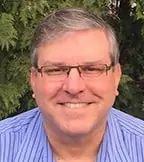

Despite the fact that you have taken every precaution, hitting utility lines or other hidden infrastructure is still relatively common. Even after all the records are consulted and metal detector tests completed, you can dig up an entire storage tank that wasn’t accounted for or find a random pipe with no apparent usefulness.
Having a tool that can get you down there without damage is a significant benefit to those in the field. SCS recommends using the Hydrovac or Air Knife technologies, tools that can save money and time when working on sites with sensitivities or a longer historical background when the risks are highest.
SCS uses these tools when drilling at a transfer station near older or deeper power lines. We find utilities can be buried deeply below ground or are not encased in metal pipes, making metal detectors useless.
When remediating a historic property for developers with nearby utility lines and there’s a question about the accuracy of the records, it is far safer and cost efficient to use these newer technologies to dig a hole as small as for setting a mailbox, or as large as digging an entire site for construction.
The Hydrovac and Air Knife will both remove soil cover and allow you to see any underground utilities or infrastructure before excavation or drilling. The Hydrovac uses pressurized water and a vacuum system to remove soil. The Air Knife accomplishes the same thing using compressed air instead of water.
SCS Engineers can provide a range of equipment sizes and capabilities including:
By Thomas Karwoski and Sherren Clark
About the Authors:


Links to SCS Services: CCR, Landfill, and Remediation pages.
On Friday, Dec. 16, 2016, President Obama signed The Water Infrastructure Improvements for the Nation Act or the “WIIN Act.” Section 2301 of the WIIN Act allows states to establish permit programs to regulate the disposal of coal combustion residuals (CCR) units in lieu of the Environmental Protection Agency’s (EPA) CCR regulations and published at 40 CFR 257, Subpart D, also known as the federal CCR rule, that were effective as of October 19, 2015.
Under the federal CCR rule, enforcement has been through citizen suits brought under Section 7002 of the Resource Conservation and Recovery Act (RCRA). Following WIIN, for CCR disposal facilities operating under an approved permit program, citizen enforcement will be replaced by more traditional state and federal enforcement authorities. It will take time for states to apply for permit authority and to issue permits, and in the meantime the federal CCR rule will continue to be enforced by citizen suits, and utilities will be subject to potentially conflicting interpretations of what is required to comply at a given facility.
Other CCR-related highlights from the WIIN Act include:
The WIIN Act that was passed by the U.S. Congress on Dec. 10, 2016, is based on CCR legislation that has been introduced in the House of Representatives and Senate in various forms over the past 6 years with the support of many in the utility industry. The WIIN Act has been lauded by the U.S. Senate Committee on Environment and Public Works and utility groups alike.
For example:
“This new permitting authority fixes the main problems with the recent coal ash regulation issued by the Environmental Protection Agency, by removing citizen suits as the sole means of enforcement and allowing states to tailor permit requirements on a case-by-case basis.”
“The coal ash language will ensure that states have the authority and flexibility they need to regulate coal ash while protecting the environment as much as the current EPA coal combustion residuals rule,” said APPA Vice President of Government Relations and Counsel Desmarie Waterhouse.
Coal Ash Language Backed by APPA Is Headed to President’s Desk
“…these legislative provisions will enable states to be more involved in the permitting process for the closure of basins.”
EII Applauds Passage of the Water Infrastructure Improvements for the Nation Act
“The bill also injects greatly needed certainty into the regulation of coal ash by giving states clear permitting and enforcement authority and reducing litigation, while providing for its continued beneficial use.”
SCS Engineers will continue to track the WIIN Act and provide you with updates as states consider and make known their approach to developing a CCR permit program, or not.
For questions about the Act or more information, please contact:
Mike McLaughlin, PE, Senior Vice President
Eric Nelson, PE, Vice President
Steve Lamb, PE, Vice President
Kevin Yard, PE, Vice President
Or contact your local SCS Engineers office.